The best 16 kinds of wild flowers, which have you planted?

WeChat account of Flower cultivation: yanghua98
Professional flower lovers exchange platform, flower lovers must have artifacts!
1. Scutellaria barbata
Chinese name flowering grain / gram type color Latin name height Scutellaria barbata-autumn 10000 annual yellow / pink / purple / white Portulaca grandiflora10-20
Half lotus is called "pine needle peony" because its leaves are like pine needles and flowers are like peonies. Its growth is very low and its stem is creeping. The flowers are large and colorful, and their fleshy leaves are round and stick-shaped, with large flowers and few leaves, so they are highly resistant to drought. Half a lotus prefers bright light, and the flowers will close at night or on cloudy days. As a super dwarf species, Scutellaria barbata has good adaptability to the environment, which makes it one of the highly recommended choices.
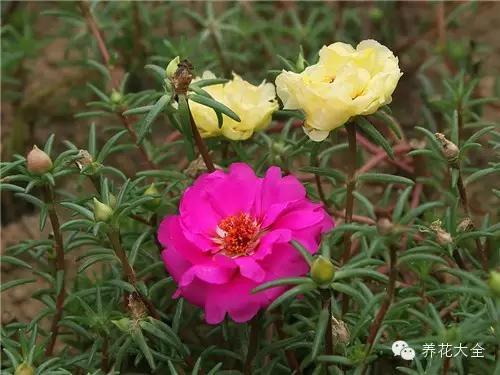
Scutellaria barbata is native to Brazil and its growth height is only 15-20cm. It can germinate about 10 days after sowing under the condition of more than 15 ℃ and blossom in about 30 days.
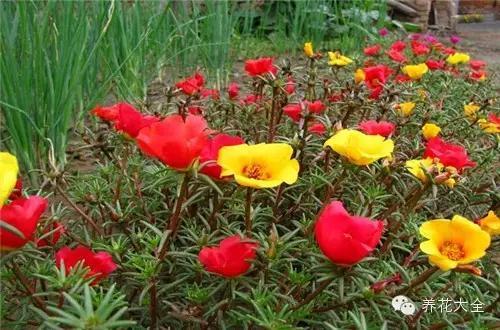
Therefore, its sowing time is suitable from spring to autumn. Barbata skullcap likes strong light and is very drought-resistant, has tenacious vitality, commonly known as "deathless", these characteristics of ultra-low maintenance make it have obvious advantages in large-area landscape greening with poor planting and management conditions.
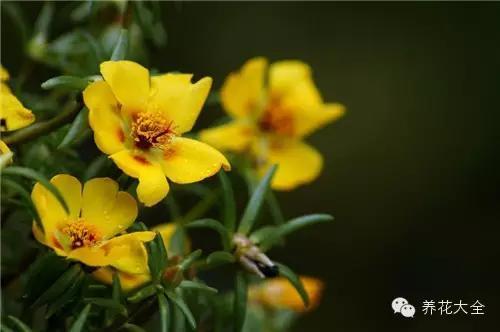
Half a lotus sees the sun blooming and closes in the morning, evening and cloudy day, so it has the name of "sunflower" and "noon flower". The half-branch lotus is rich in color, including white, yellow, red and purple. When sowing, it should be noted that the seeds are small and should not be covered with soil, just press the flat bed directly. In addition to ensuring the necessary moisture at the seedling stage, it is not necessary to water frequently during the growing period.
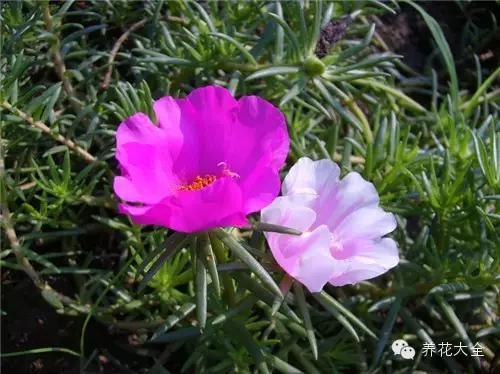
Scutellaria barbata is widely welcomed by users as an important variety of low and high varieties because it is more prominent in the four indexes of flower color richness, manageability, florescence length and flowering speed.
2. Zinnia
Chinese name flowering grain / gram type color Latin name high hundred-day grass summer-autumn 120 one-year yellow / pink / red / purple / orange Zinnia elegans high pole 50 Mel 80, dwarf pole 30 mi 50
The hundred-day prairie is produced in the southwestern United States, Mexico and South America, so it is resistant to barren, drought and strong nature. Born with the rough and bold style of America, the flowers are large and colorful. Because of its hard stem, the plant is tall and straight and is not easy to lodge. The growth height of zinnia is very neat, and it can form a magnificent landscape effect when planted in a large area. Because of its bright color, butterflies and bees often dance on it.
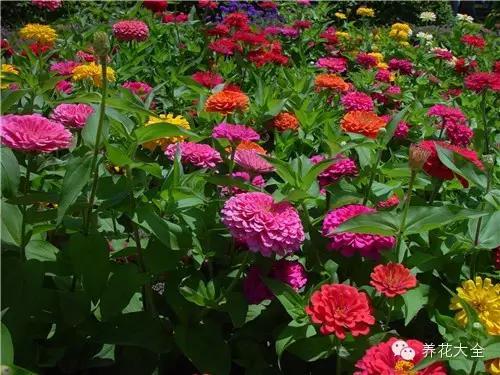
The hundred-day grass with large flowers is plump and has a rich choice of colors. On the other hand, the zinnia of small flower type is dense and luxuriant, and the number of flowers is more. Therefore, it can provide landscape effects with different styles. Zinnia is also one of the species we recommend to you that are very easy to grow and very easy to produce results.
Zinnia is a relatively short-day plant. When the sunshine is longer than 14 hours, the flowering will be delayed, and it will take about 70 days from sowing to flowering, and the number of tongue-shaped flowers will increase significantly; while when the sunshine is less than 12 hours, the flowering will be shortened to about 60 days from sowing to flowering. Therefore, experienced growers can control the flowering date by adjusting the sowing time and heart-picking time.
3. Yu Mei, Iceland
Chinese name flowering grain / gram type color Latin name high Yu Mei Ren Chun-Summer 11500 one-and two-year flour / white / purple / red Papaver rhoeas40-80
Icelandic Yumei is the representative of North American-style landscape flowers, with slender stems and larger flowers, much more than ordinary Yumei, unique plant shape, bright colors, and seeds have a certain ability of self-propagation, so they can form a very spectacular sea of flowers when planted in pieces. and can last from spring to summer.
It is often used for unicast or several other kinds of Yu Mei to form a beautiful combination of Yu Mei. Spring sowing and autumn sowing are fine, but autumn sowing plants are stronger and better.
The gorgeous color, low height and long flowering period of the Icelandic Yu beauty make it a popular flower variety, and it is also one of the species we highly recommend.
4. Persian chrysanthemum
Chinese name flowering grain / gram type color Latin name high Persian chrysanthemum summer-autumn 120 one-year flour / white / red Cosmos bipinnatus high pole 50 Mel 100, dwarf 30 Mel 50
Persian chrysanthemum excellent drought resistance, cold resistance, barren resistance makes it the first choice for a variety of lack of conservation environment landscape decoration materials, it likes light and tolerance to semi-shade and high temperature, and grows rapidly, so it can often be seen on the side of the road, slender leaves and branches, so whether single sowing or in combination with other wild flower varieties, can form a beautiful landscape.
Most of the wild species are mixed colors, while commercially produced seeds have a variety of color separation patterns to choose from.
In addition to the richness of color selection, commercially produced seeds are more orderly in plant shape, suitable for arranging flower mirrors, and are planted as background materials on the edge of grass, trees, surrounding areas and roadsides.
In addition to the rapid growth of Persian chrysanthemum, its outstanding self-sowing ability is also an important reason for us to recommend it, which allows you to greatly save the labor of sowing while maintaining the landscape effect.
5. Jasmine
Chinese flowering grain / gram type color Latin name Gao Mo Li Xia-Autumn 12 yellow / pink / red / white Mirabilis jalapa50-90
Grass jasmine is a real native plant. If you are not familiar with the name "grass jasmine", you must have some impression of "Thunder Flower".
Its petals are light and elegant, translucent like tulle when in full bloom, and rich in color. It is one of the commonly used landscape greening materials. It can safely survive the winter in the underground part of southern China and become perennial grass flowers. It will continue to sprout and grow new plants in spring next year. The flowers of grass jasmine bloom from evening to early morning, close in strong light, and grow and blossom well if they have sparse shade in summer. Grass jasmine can reproduce by itself.
Commercially produced grass jasmine seeds have a rich variety of color separation for you to choose from. Colorful types, warm red, romantic yellow and elegant white can make landscape designers more comfortable with colors when they are built.
6. Red flax
Chinese name flowering grain / gram type color Latin name highly red flax summer 290 annual red Linum grandiflorum rubrum30-90
Red flax is rare in China, but it is one of the most commonly used species in foreign landscape design. Its red florets, such as dotted lights in the twilight, have a unique charm in the lush leaves.
Whether it is planted alone or in combination with other species, it can form a good landscape effect and quickly attract the attention of viewers.
Chinese name flowering grain / gram type color Latin name height Calendula summer-autumn 120 annual orange Calendula officinalis40-60
Calendula is native to the coastal areas of southern Europe and the Mediterranean. It is said that the ancient Romans saw the marigold chrysanthemum blooming on the first day of the new year, so they named it after "Calends" (the first day of the Roman calendar). It has good adaptability and has become a widely distributed landscape flower in our country, so it is named calendula because it blooms like a golden plate.
Its flower shape is larger, one or more rounds of tongue-shaped flowers cascading, showing golden or orange, Calendula flowers bright yellow, leaves green, very eye-catching.
Uses: flower beds, flower borders, potted plants, ground covers, general greening, combinations.
Because of its relatively low height, calendula is especially suitable for landscape foreground matching or large-scale planting, while the gorgeous yellow and orange flowers are often matched with red varieties of the same height. It has become one of the commonly used varieties to set off the warm atmosphere of the festival, which is particularly loved by Chinese designers.
8. Blue flax
Chinese name flowering grain / gram type color Latin name highly blue flax spring-summer 690 years old blue Linum perenne30-60
Blue flax is one of the blue flowering species in early spring. in the warm and cold early spring, other kinds of flowers are still sleeping, and the blue flax sown last autumn already showed its light smile early.
In the hands of landscape designers, it is often mixed with hard fescue to form a refreshing, rustic lawn.
The growing blue flax is dotted with starry little blue flowers in full bloom, giving people a feeling of calm and quiet. It is relatively cold-tolerant and adaptable. Because it is a perennial variety, the plant will grow up year by year, and the flowers will increase gradually from the second year.
9. Fillet piercing fish
Chinese name flowering grain / gram type color Latin name high willow piercing fish spring-autumn 16250 annual flour / lilac / yellow Linaria maroccana30-60
Willow piercing fish can grow well in sand, hillside meadows and roadsides, thanks to its strong fecundity, so it has a very vivid flower language is "tenacious".
The branches and leaves of willow piercing fish are very soft and thin, the Corolla tube is long in a false shape, and there are dense florets at the top in a raceme. The flowers are about 2cm, small and exquisite.
European and American designers often mix it with marigolds, flowers, diamonds and other low species, elegant purple and gorgeous orange collocation to form a high-grade landscape ground cover effect, the following picture is the real effect after the mixed broadcast.
10. Sulfur chrysanthemum
Chinese name flowering grain / gram type color Latin name high sulfur chrysanthemum summer-autumn 110 one-year orange red Cosmos sulphureus tall pole 60rel 100, dwarf pole 40rel 60
Sulfur chrysanthemum has bright colors, strong adaptability, eye-catching orange and strong barren tolerance. It can not only be suitable for landscape applications in strong sunlight, but also can be matched with other plants to form an excellent combination of landscape flowers. Experiments have proved that it can still grow and bloom well under the shade of 1500-2000 lux.
Because of its ease of planting, flowering speed and relatively long flowering period, sulfur chrysanthemum is also one of the excellent landscape flower species with fast growth recommended by us. It can be sown from late spring to early autumn and obtain luxuriant landscape effect.
Sulfur chrysanthemum is also often mixed with dwarf Persian chrysanthemum (common Persian chrysanthemum is not suitable for mixing with it because it is higher in height).
11. Stars all over the sky
Chinese name flowering grain / gram type color Latin name height all-star summer 800 one-or two-year pink Gypsophila elegans50-80
Whenever countless white or pink buds gather on the branches in early summer, the white and slightly fragrant flowers form spectacular flowers, like stars shining on the horizon.
Overlooking as if early morning clouds, evening sunset, it is also known as "Xiacao".
According to the different use environment, we can choose three types: large flower white, small flower white and large flower pink. Because of the Chinese people's habit of choosing color, the pink star is more favored when using a large area landscape.
12. Cornflower
Chinese name flowering grain / gram type color Latin name high cornflower summer-autumn 220 first and second year blue / red / yellow / purple Centaurea cyanus high pole 50m 70, dwarf pole 30m 50
Cornflower is one of the most widely used landscape flower species, it has nearly ten colors, very rich, clustered florets are small ball-shaped, unique flower shape, different varieties have different growth height.
One species can create a rich and colorful landscape, so it is a favorite of landscape designers. It is a good material for landscape planting, potted plants and cut flowers. It can be used with other grass flowers to decorate flower beds and flower borders, and can also be planted in pieces. Tall varieties can also be used as cut flowers.
Cornflower originated in Europe, in the European country roads, wheat fields, you can see the cornflower smaller lovely figure, emitting a faint fragrance. Especially in Germany, which is located in central Europe, there are traces of corn chrysanthemum on hillsides, fields, front and back houses, roadsides and watersides.
Every summer is the season for the cornflower to bloom, and the medium-sized heads grow at the top of the slender stem, just like a beautiful girl. Cornflower is also one of the classic species commonly used in combinations.
13. Chrysanthemum morifolium
Chinese name flowering grain / gram type color Latin name height Chrysanthemum in summer more than 350 years old yellow and red bicolor Gaillardia aristata tall pole 50Mel 70, dwarf pole 20Mel 40
The collocation of red and yellow flowers and colors of chrysanthemum is very consistent with the Chinese concept of "festive auspiciousness", and its growth height is relatively low, so designers often use chrysanthemum to decorate large tracts of landscape quilt to create a happy atmosphere.
Chrysanthemum chrysanthemum has stronger cold tolerance than ordinary varieties, when other flower species have come to an end in late autumn, its wonderful figure is still staged on the landscape stage, so chrysanthemum is a prominent representative of perennial autumn flowers.
Chrysanthemum is native to North America and has a strong ability to tolerate drought and heat, so it has a long flowering period (can be planted from spring to autumn) and adapts to a wide range of areas.
Spring, autumn and winter (south) sowing, spring sowing is the best, self-sowing reproduction, strong nature. Therefore, Chrysanthemum morifolium is a good herbaceous flower for greening, beautification and sand fixation in sandy land, and its cultivation and management is simple.
14. Lavender
Chinese name flowering grain / gram type color Latin name highly lavender summer-autumn more than 1000 years of blue-purple Lavandula angustifolia40-60
Lavender is a kind of landscape flower and spice plant with a long history. It is the favorite bath additive of the ancient Greeks and Romans. The English name Lavender comes from the Latin "Larare", which means "washing". Fragrance acting on the brain can change the brain waves, lavender can stimulate the human brain alpha wave, will make people feel calm and calm. In its country of origin, Provence, France, lavender has become a local pride. Lavender grasslands are wild. In the middle of the 19th century, people began to pick wild lavender in an organized way, and large-scale cultivation began in the 1920s.
Lavender is not only a typical vanilla plant, because of its long planting history, it also carries a lot of cultural connotations and becomes the representative of romantic and amorous feelings of France. In the suburbs of Beijing, romantic French lovers have set up a lavender manor, which has become a paradise for tourists, vacations and photographers.
Lavandula vera (English Lavender) is a narrow leaf lavender, compared with French Lavender, the flavor is more rich, is the most suitable for essential oil extraction of lavender varieties.
15. Yu Mei
Chinese name flowering grain / gram type color Latin name high Yu Mei Ren Chun-summer 11500 raw flour / white / purple / red Papaver rhoeas40-80
When the beautiful woman is not in bloom, the egg-shaped bud is covered with two green and white-edged sepals, hanging from the slender and erect pedicel, very much like a girl bowing her head and meditating.
When the stem is bent upright when blooming, the four thin petals on the upward flower are as thin as Aya, smooth and clean as silk, and the light Corolla is like red clouds and patches of colored silk, although there is no wind, it seems to shake itself, and when the wind moves, it is more ready to fly.
The beauty of Yu is both simple and elegant and rich and gorgeous, and the two are harmoniously United in one. Its appearance has the charm of beauty in Chinese classical art, which can be called a wonderful product in flowers and plants. Uses: ground covers, rock gardens, flower borders, combinations, potted plants, flower beds.
The flower shape of Yu Mei is smaller than that of Iceland, but because it is an annual species, it has fast flowering speed and strong self-sowing ability, so it is a better choice when the landscape effect is about to be formed in the same year.
The beauty of Yu is often mixed with highly similar species such as chrysanthemum, cornflower, and chrysanthemum, and its red is matched with the orange of chrysanthemum, the red and blue of cornflower, and the yellow and red of chrysanthemum, forming a very colorful effect.
Chinese name flowering grain / gram type color Latin name height do not forget grass spring-summer 1600 one or two years of blue Myosotis sylvatica25-40
Forget-me-not in China is a well-known landscape flower with special meaning. Whether it is a bouquet of flowers or flowers planted in the garden, its simple and elegant blue flowers always contain feelings of no time to be attached to and unable to give up.
It grows faster, sowing in spring can blossom in summer and autumn.
Don't forget that the grass is relatively short, the flowers are scattered, and it looks like blue fog sporadically.
The height of forget-me-not in China is very low, and it blossoms earlier when it is sown earlier. While most other summer flowering varieties are still sprouting, it has been able to develop simple and elegant blue flowers early, so it is one of the representative varieties in spring and summer flowering.
How to determine the best sowing time of wildflower combination
Generally speaking, spring, summer and autumn are the seasons for wild flowers to sow, depending on your region, climate characteristics and the results you want to achieve. So the first consideration of sowing time is not the season, but the climatic characteristics of your area.
Sow seeds in frost-free areas
If you are in an area where there is no frost or a very short frost period, you can sow seeds at any time as long as you avoid the hottest season. Of course, it is best to hurry before the rainy season, and after the seedlings grow out, the temperature is not too high. Therefore, autumn sowing is a good choice.
Sowing seeds in areas with short frost-free periods
Spring sowing and autumn sowing can be chosen, and each has its own advantages and disadvantages.
Autumn sowing
It is obvious that "nature sows seeds in autumn". In the natural state, wild flowers usually enter the full bloom in summer and seed one after another in autumn, and the seeds fall directly on the ground to "sow". Of course, the number of seeds that fall to the ground naturally is quite large, and anything can happen in a pure wild state-seeds fall on rocks or other crops and do not touch the soil at all. This is the price of self-propagation when it falls to the ground in the natural state, and a large number of seeds are actually lost. For example, the black-hearted chrysanthemum enters its full bloom in midsummer and begins to bear seeds at the end of summer. If the temperature is right, these seeds can germinate in the current season. If the climate is dry and the conditions are not suitable, they will survive the winter in the open until they sprout in the coming year.
The biggest advantage of autumn sowing, especially in cold areas, is that it blossoms earlier, usually about two weeks earlier than spring sowing. This characteristic is similar to that of lawn seeds-lawns sown in autumn are faster than those sown in spring.
The plot you choose will also affect the timing of planting. If it is a flat land, you can sow seeds at any time. If it is sloping land, it is best to choose spring sowing. Seeds sown in autumn need to go through late autumn in the soil until the whole winter, so they are more likely to be washed away.
If you decide to sow in autumn, it is best to wait until after the first Frosts Descent to ensure that the seeds do not germinate before the soil freezes.
By sowing seeds in autumn, gardeners will have more time. It is manifested in two aspects. First of all, the weather in spring is complex and changeable, while the weather in autumn is much better, sowing is not delayed by rain, there is no time limit, and the seeds must be sown at a certain time. Second, gardeners have more hours to work in autumn than in busy spring. So when sowing in autumn, you just need to choose a good site, make a whole, and then sow it before the soil freezes.
Advantage 3: it is easier to control weeds
Autumn sowing takes place at the end of the growing season, when weed seeds go into dormancy.
The dormant state of weeds is very favorable for sowing. For example, if you set up the ground one weekend and don't sow until the next weekend, it's possible in autumn, but not in spring. Obviously, dormant weed seeds buy you plenty of time. In spring, the soil must be prepared and sown on the same day, otherwise wild flower seeds will be at a complete disadvantage in the competition with weed seeds.
Of course, everything has two sides. One disadvantage of autumn sowing is that you don't know how many weed seeds there are in the soil when you sow. Of course, autumn sowing can at least ensure that flower seeds and weed seeds are in the same competitive position. When sowing in spring, the weed seeds which have experienced the whole winter have obvious competitive advantage.
Spring sowing
When sowing in spring, timing is very important. Generally speaking, you have to wait until Frosts Descent's threat has passed before sowing. But there are other considerations.
When sowing in spring, when the land is finished, it is best to sow the seeds on the same day, at least not until the next day. What's more, we can't prepare the ground this weekend and sow seeds next weekend. The reason is that when you open the ground, it gives weed seeds a chance to grow rapidly. If it is not sown in time, flower seeds will be at an obvious disadvantage in the competition with weed seeds.
Advantages of spring sowing: weeds can be removed
If you are patient enough and willing to do more work, you can take measures to control weeds before sowing in spring. Compared with autumn sowing, this is a major advantage of spring sowing.
The specific method is: first clear the land, do not sow, but let the weeds grow rapidly (watering the soil when the soil is dry to promote the weeds to grow quickly, and then observe carefully). Two weeks later, weeds emerge one after another, and you can at least know the earliest types of weeds in the soil. Keep waiting (the time you wait depends on the weather and the time you plan to sow). When you have a clear understanding of the weeds in the soil, you can kill them and plant flowers.
There are several different ways to deal with weeds. Many people use herbicides (such as paraquat). Some gardeners will spread newspapers on weeds to suffocate weeds, but this method is not safe and takes a long time. The treated soil can no longer be cultivated. If the soil is prepared again at this time, new weed seeds will be found, resulting in all previous efforts being wasted.
After preparing the land and dealing with weeds, the flower species will grow in an environment with as few weeds as possible. But it's hard to be perfect about anything, and weeds will come out after a while. Even so, weed treatment before sowing is already the best way. Of course, pre-broadcast processing also has some shortcomings: 1, delay time. 2. More water is needed. Due to the delay of a period of time, we will miss part of the rainy season. 3. Delay in flowering.
Summer sowing
Summer sowing is suitable in most parts of our country as long as we avoid the high temperature season. Many flower species do not sprout in high temperature. The weather in early summer is changeable and the night is cooler, so it is suitable for sowing. The later the summer sowing, the greater the water demand.
Different flower types and different sowing time
Another consideration for sowing time is the type of flower species. For example, perennial varieties can be sown for most of the year, but they don't sprout or blossom at the time you want. Most perennial varieties need to go through a winter before flowering. An annual variety that grows and blossoms rapidly and dies before the frost. It means that if you sow annual seeds in midsummer, even if the climate is suitable for growth, you won't see many flowers blooming, because frosts will follow. If the sowing combination products (including both annual and perennial varieties), regardless of autumn sowing, spring sowing or early summer sowing, annual varieties bloom in the same year, while the second year is the landscape effect of perennial varieties and annual varieties with strong self-sowing ability.
About annual varieties: even if some TA varieties are sown with seeds, they will be hurt by the late spring cold after they germinate in the spring next year. Persian chrysanthemum belongs to this type, while Yu Meiren and cornflower will not be greatly affected.
Sowing schedule
Sowing time frost-free period
< 150d 150d-270d > 270d Spring sowing (Dingling sowing) HA, PHA, PHA, P before the last Frosts Descent Spring sowing after the last Frosts Descent all types of summer sowing avoid high temperature time all types of autumn sowing 8 weeks before the first Frosts Descent HA, PA, HA, TP, P all types of autumn sowing (send seed sowing) after the first Frosts Descent, all types of soil before freezing
For the exchange of flowers, please add an editor, Wechat: yanghuadaquan
A complete Collection of Flowers
WeChat account: yanghua98 (long press copy)
Professional flower lovers exchange platform, flower lovers must have artifacts!
Reply me in the official account dialogue mode, give you a good look!
Reply: strange flower: rare unique flower!
Flower watering: 50 kinds of flower watering methods!
Reply: succulent map: 100 kinds of succulent maintenance methods!
Reply: self-made flower fertilizer: home-made flower fertilizer!
Reply: diseases and insect pests: practical flower pest prevention and control method!
Reply: kill Matt: succulent little freshness turns into killing Matt!
- Prev

What are the prospects for large-scale cultivation of Gastrodia elata in rural areas?
Gastrodia elata, as a valuable traditional Chinese medicine, used to be collected in the wild. With the demand for Gastrodia elata in the market, more and more people are planted.
- Next
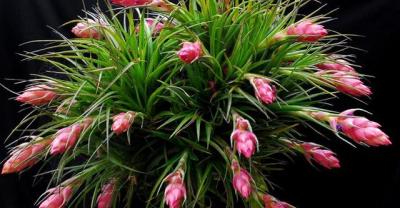
Wild flowers planted in the countryside sell for three yuan each!
Twelve golden chrysanthemums sell for more than 40 yuan. Beauty is very beautiful but expensive. Have you had a drink?
Related
- Fuxing push coffee new agricultural production and marketing class: lack of small-scale processing plants
- Jujube rice field leisure farm deep ploughing Yilan for five years to create a space for organic food and play
- Nongyu Farm-A trial of organic papaya for brave women with advanced technology
- Four points for attention in the prevention and control of diseases and insect pests of edible fungi
- How to add nutrient solution to Edible Fungi
- Is there any good way to control edible fungus mites?
- Open Inoculation Technology of Edible Fungi
- Is there any clever way to use fertilizer for edible fungus in winter?
- What agents are used to kill the pathogens of edible fungi in the mushroom shed?
- Rapid drying of Edible Fungi

